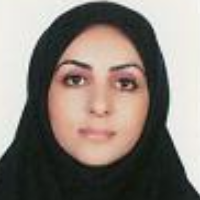Studying The Image in the Murals of Kashan’s Boroujerdi House during Qajar Period
Architecture and building decoration were among the important arts in the Qajar period. The importance of this period can be attributed to the beginning of the confrontation between tradition and modernity in Iran. In fact, the remnants of the Qajar period show that the decoration of the buildings and the combination of painting and architecture were important in this period. And it seems that the overlap of Iranian and French traditions creates a set of visual motifs to decorate the building. Artists and architects have left very exquisite works in this period, all of which have been executed by the owners of the building. The art of mural painting of the Qajar period, due to the taste of architects and owners, is considered as one of the most valuable developments and changes in this period. The Qajar people made great use of the art of mural painting, especially for exterior and interior houses and the whole building in general. The decoration of the ports of this period is influenced by Western features and other arts of the Qajar period. Therefore, painting in murals is an important part of the architecture of any building, which in addition to a decorative element, reflects the cultural, social, political, mythological and ancient themes. Mural painting is an intermediary medium for expressing art and conveying the original and ancient features of this land, which became popular in the residential houses of this period. The house of the "Boroujerdis" -one of the most important buildings of this period- is located on Alavi Street in Kashan, and has very impressive decorations and murals that culminate in its royal hall. This building belongs to the famous businessman Seyed Hassan Natanzi, which was built as his personal home. The fame of this house, in addition to its unique antiquity and architecture, is due to its decorations and paintings. Unique pictures and designs have been executed in this house, which is of special importance because these pictures are tools which convey the culture and lifestyle of the residents of this building to us. The royal residence of this house is located in the outer courtyard and in its summer residence and has the most decorations of paintings. The royal residence has long been important in Iran, as an important place to receive guests and hold Iranian ceremonies and customs. Therefore, its luxury and architectural decorations have shown the cultural and social status of the landlord. This house is a collection of paintings and pictorial elements that are significant in terms of variety of colors, forms and concepts in this period. In this research, the role and reason for the implementation of murals and paintings in the building, especially the royal hall, has been comprehensively studied, something that has been scattered in other researches. This building has many visual elements that are influenced by Iranian archetypes and mythological themes and include narrations and stories that are rooted in the art of the Qajar period and the beliefs of the Iranians in this period. The main questions of this research are: 1) What is the narrator in the murals of the house of Boroujerdi in Kashan? 2) How do these images relate to Iranian myths and legends? The method of this research is descriptive-analytical and data has been collected using library materials and documents. By examining and analyzing the paintings and classifying the designs executed in them, the following conclusion is come up: In addition to its functional and decorative role, the paintings of the Royal Hall also convey cultural, social and political messages. And human, animal, plant, architecture and objects motifs in this empire are inspired by Persian myths and legends. Plant, animal and human motifs are the most important and widely used and architectural motifs and objects are the least used motifs of the building. In the field of mythological subjects, the role of the catcher, which shows the victory of good over evil, the battle of man with animal and animal with animal, the role of angel, demon and hybrid creatures, is rooted in ancient Iranian beliefs and is of great importance. The use of Iranian myths and narratives such as Lily and Majnoon, Khosrow, Shirin, Shirin and Farhad has been influenced by the lyrical stories and literature of this land. In general, the painting in the house of the Boroujerdis, influenced by the taste of the landlord, was inspired by European methods and was drawn and executed in accordance with the conventional rules of Qajar painting.
- حق عضویت دریافتی صرف حمایت از نشریات عضو و نگهداری، تکمیل و توسعه مگیران میشود.
- پرداخت حق اشتراک و دانلود مقالات اجازه بازنشر آن در سایر رسانههای چاپی و دیجیتال را به کاربر نمیدهد.



